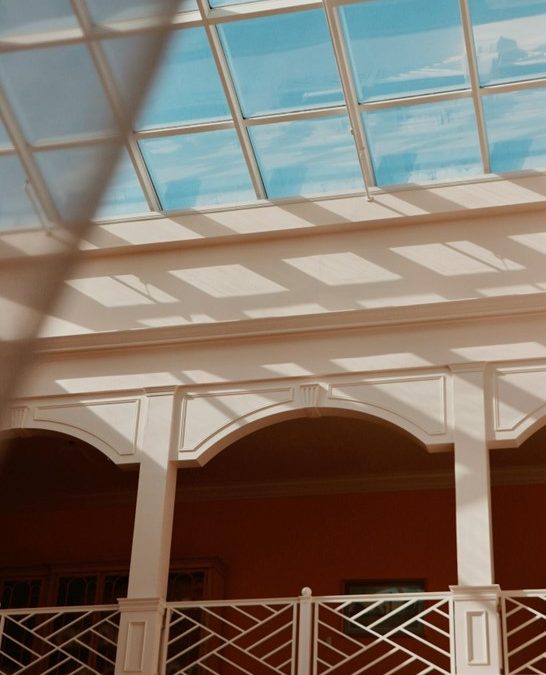In the realm of architectural design and interior aesthetics, the role of natural light cannot be overstated. It not only enhances the visual appeal of a space but also contributes significantly to the well-being and productivity of its occupants. Among the various ways to harness natural light, low-pitch roof windows stand out as a compelling option. In this blog post, we’ll delve into the top reasons why low-pitch roof windows should be a consideration for anyone looking to optimize natural illumination in their living or working spaces.
Optimal Light Infiltration
Low-pitch roof windows are strategically designed to maximize the amount of natural light that enters a room. As we can see with a VELUX low pitch roof window, unlike traditional windows that are often limited by their size and placement, low-pitch roof windows can be installed higher up on the wall, allowing light to penetrate deeper into the space. This design feature ensures that even rooms with limited external exposure can benefit from ample daylight, creating a more open and inviting atmosphere.
Versatility in Design
One of the key advantages of low-pitch roof windows is their versatility in design. They come in a variety of shapes and sizes, making them suitable for different architectural styles and building configurations. Whether you’re designing a modern loft with expansive ceilings or a cozy attic space, low-pitch roof windows can be customized to fit seamlessly into your vision. From fixed windows to operable skylights that provide ventilation, the options are vast, allowing for creative freedom while optimizing natural light intake.
Energy Efficiency
In addition to their aesthetic and functional benefits, low-pitch roof windows contribute to energy efficiency in buildings. By harnessing natural light during daylight hours, they reduce the need for artificial lighting, thereby lowering energy consumption and utility costs. Furthermore, many low-pitch roof windows are equipped with advanced glazing technologies that enhance thermal insulation, preventing heat loss in winter and minimizing heat gain in summer. This dual functionality makes them a sustainable choice for environmentally conscious designs.
Enhanced Visual Comfort
Natural light has a profound impact on visual comfort and well-being. Low-pitch roof windows create a balanced and diffused light environment, reducing glare and harsh shadows that can strain the eyes. This even distribution of light enhances the overall comfort of a space, making it more pleasant and conducive to various activities, from work and study to relaxation and socializing. Additionally, the connection to the outdoors through roof windows adds a sense of openness and tranquility, promoting a healthier indoor environment.
Daylighting Benefits
The concept of daylighting, which focuses on optimizing natural light in building design, is a fundamental principle that low-pitch roof windows excel at supporting. Daylighting not only reduces reliance on artificial lighting but also has positive effects on human health and productivity. Exposure to natural light has been linked to improved mood, increased vitamin D synthesis, and better circadian rhythm regulation. By incorporating low-pitch roof windows into a building’s design, architects and designers can harness these daylighting benefits for the well-being of occupants.
Aesthetics and Style
Low-pitch roof windows offer more than just practical benefits; they also contribute to the aesthetics and style of a space. Their sleek and modern design adds an element of elegance that complements contemporary architecture seamlessly. These windows have the unique ability to frame outdoor views, bringing nature indoors and creating a sense of connection with the surroundings.
In addition, low-pitch roof windows can serve as focal points within a room, drawing the eye and adding visual interest. Whether used individually or as part of a larger design scheme, they enhance the overall aesthetics of a building, making it more visually appealing and dynamic. Their clean lines and minimalist appeal make them versatile elements that can elevate the style and ambiance of any space they are installed in.
Increased Property Value
From a real estate perspective, the inclusion of low-pitch roof windows can enhance the value of a property. Homebuyers and tenants often prioritize natural light and airy spaces, viewing them as desirable features that enhance quality of life. Properties with well-designed low-pitch roof windows that optimize natural illumination are likely to command higher prices and attract more interest in the market. As such, investing in low-pitch roof windows can yield long-term financial benefits in addition to their immediate advantages.

In conclusion, low-pitch roof windows offer a multitude of benefits that make them a compelling choice for enhancing natural illumination in residential and commercial spaces. From optimal light infiltration and design versatility to energy efficiency and improved well-being, these windows contribute significantly to the overall quality and functionality of a building. Whether you’re renovating an existing space or embarking on a new construction project, consider incorporating low-pitch roof windows to unlock their transformative potential and create a brighter, more inviting environment for occupants to enjoy.

Recent Comments